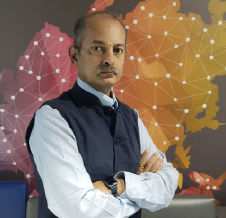Breaking News

A proposal to establish a ₹900 crore satellite communication (satcom) monitoring facility has been approved by the Digital Communications Commission (DCC).
In a strategic move to bolster India’s space security and communication infrastructure, the government has approved a ₹900 crore investment to establish a satellite communication (satcom) monitoring facility. The initiative comes as global satellite internet giants, including Elon Musk’s Starlink and Amazon’s Project Kuiper, prepare to enter the rapidly growing Indian market.
The decision, cleared by the Digital Communications Commission (DCC), is aimed at ensuring national safeguards amid the increasing proliferation of non-geostationary orbit (NGSO) satellites, which operate in lower orbits and provide high-speed broadband services. These satellites are a key component of the next-generation satellite internet revolution, and their operation over Indian territory requires close regulatory oversight.
Key Objectives of the Satcom Monitoring Facility:
The decision, cleared by the Digital Communications Commission (DCC), is aimed at ensuring national safeguards amid the increasing proliferation of non-geostationary orbit (NGSO) satellites, which operate in lower orbits and provide high-speed broadband services. These satellites are a key component of the next-generation satellite internet revolution, and their operation over Indian territory requires close regulatory oversight.
Key Objectives of the Satcom Monitoring Facility:
Real-time tracking of both domestic and foreign satellites operating in Indian skies
Reservation of orbital and spectrum resources for Indian satellite operators, preventing spectrum crowding by international players
Monitoring NGSO satellite constellations, which pose unique regulatory and technical challenges due to their dynamic nature
Strengthening India’s space sovereignty and protecting strategic communication channels
Enabling compliance checks to ensure foreign satcom operators adhere to Indian licensing and cybersecurity norms
The facility is seen as a critical infrastructure investment, especially as low Earth orbit (LEO) satellite providers push for regulatory approvals to roll out services across India’s urban and rural landscapes. The satcom ecosystem in India is projected to grow significantly, with demand for high-speed internet, 5G backhaul, remote connectivity, and defense applications driving the need for tighter surveillance and spectrum management.
Rising Competition in Indian Satcom Space
India's satcom market is becoming increasingly competitive, with players like Starlink, Kuiper, OneWeb, and Bharti-backed Eutelsat expressing strong interest. Domestic entities such as ISRO, IN-SPACe, and private space-tech startups are also stepping up, advocating for favorable policies to promote indigenous satellite manufacturing and operation.
With the Telecom Regulatory Authority of India (TRAI) and the Department of Telecommunications (DoT) working closely on licensing frameworks, this ₹900 crore satcom monitoring facility marks a decisive step in creating a balanced and secure satellite internet ecosystem in India.
See What’s Next in Tech With the Fast Forward Newsletter
Tweets From @varindiamag
Nothing to see here - yet
When they Tweet, their Tweets will show up here.




























